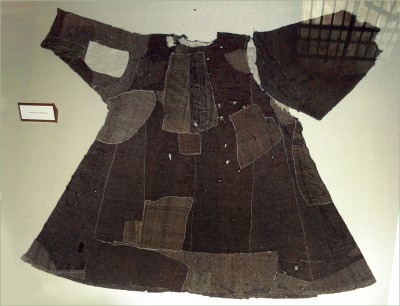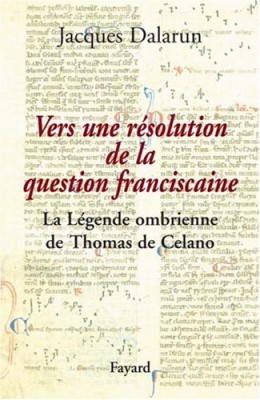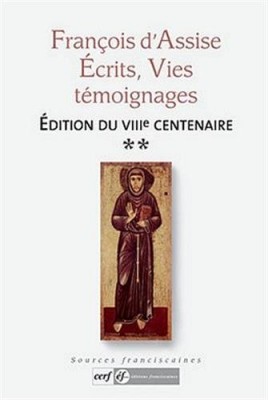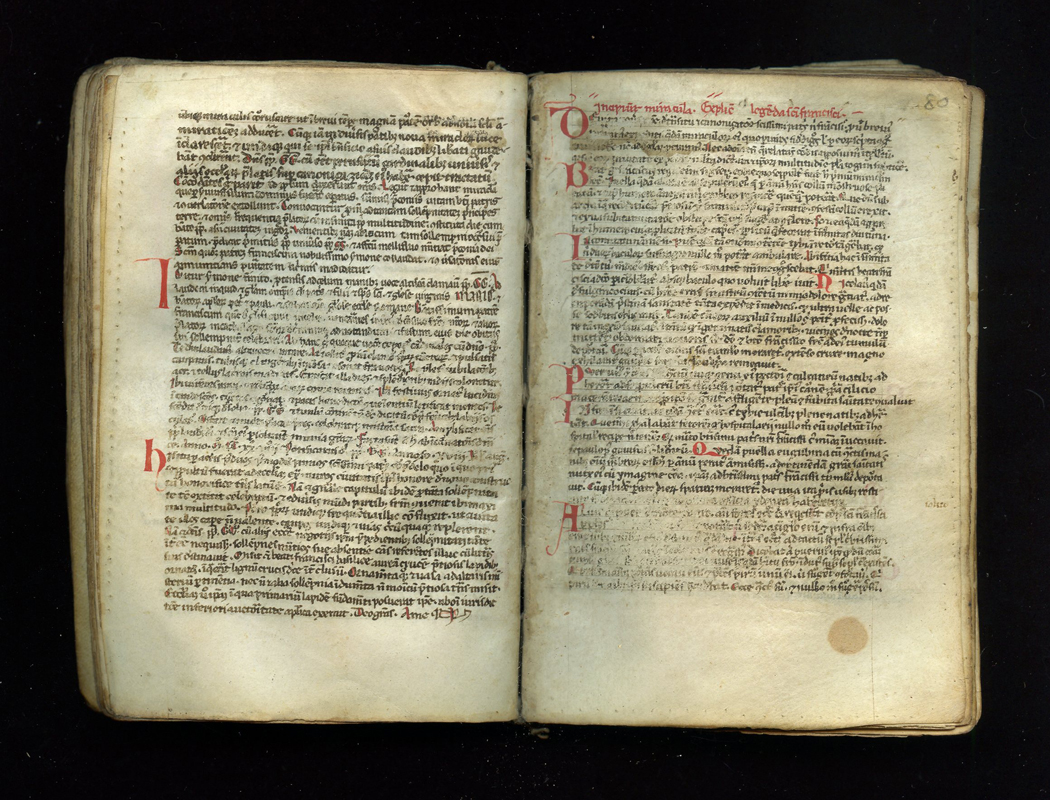Immediately after the death of St. Francis of Assisi in 1226 his friends began to write down the stories of his life. Later in the 13th century – when it became opportune to gloss over the more radical ideas of the saint – many of these stories were suppressed. A newly found tiny codex holds some of these first texts, later eradicated from the tradition.
A tiny codex measuring no more than 12 x 8 cm, but holding 122 densely written pages, is currently creating a buzz amongst both clerics and historians. Without illuminations and seemingly rather insignificant the find was really only discovered by accident by a professor of history at Vermont, Sean Field. He spotted the codex as it was coming up for auction in Paris and alerted his friend, Jacques Dalarun, historian and director of research at CNRS. Cursorily studying the manuscript from photos presented by the auction house he was immediately stirred by the fact that this seemed to be a manuscript with an unknown text by Thomas de Celano, friend and chronicler of francis. This text was perhaps one of those suppressed and lost in the 13th century after the final official biography was published by Bonaventura in 1263. In 1266 Bonaventura’s version was declared the only official text and all others were ordered destroyed by the General Chapter in Paris. Hence a dearth of early manuscripts make the understanding of the man beneath the saintly myth a historiographically very complicated task to undertake.
The works of Thomas de Celano
In September 1226 Francis of Assisi died at Porziuncola, where he had asked to be taken in the last days of his life. Immediately afterwards his body was carried inside the walls of Assisi in order to forestall the thievery of a body of a person so obviously on the way to both beatification and sanctification. As part of this process Pope Gregory IX in 1228 conferred the task of writing the official vita to Thomas de Celano, who had been a companion to Francis since at least 1215. This vita was soon completed and already in February 1229 it was approved, confirmed and declared official by the Pope. Later – in 1244 – Celano wrote a second life of St. Francis after having “meditated on his holiness”. The official aim was to present a more organised version of the life of the Saint. Thomas de Celano also wrote “The Legend for Use in the Choir” plus a “Treatise on the Miracles” and other minor texts.
However, it is well known that a number of non-authorised remembrances at the same time circulated among the Franciscans, some of which were even written down. These different texts played a major role in the struggles between the different factions of the Franciscans about the proper understanding of the visions of il Poverello concerning the proper rules and regulations. During this period the tiny brand of brothers was extremely busy turning itself into a major spiritual and political resource all over Europe. One of these texts was an intermediate Vita by Thomas de Celano. Until now, though, only fragments of this had surfaced. However Dalarun had for some time been busy trying to reconstruct this text from preserved fragments found elsewhere [1]. Now, it seems, he has a full text to work with. Hopefully this might shed new light on the interplay between the different layers of reminiscences and texts, which circulated in the 13th century.
As of now professor Dalarun believes that the chronology is as follows: “In 1229 Thomas of Celano writes the first life (1). Between 1232 an 1239 he writes the second – new found life summarizing and updating the first one (2). In the same period he writes the “Legenda ad usum chore”, which is a summary of number two (3). Finally there is the life of St. Francis written by Julian of Speir, which is a mixture of one and two (4),” he tells us (personal communication).
The new text

According to Professor Dalarun the new-found text thus seems to be an amendment of the first vita of Celano. Apparently this original text was deemed too long by the brethren and was later shortened. However it also holds new items or vignettes as well as some reflections of Thomas de Celano, especially concerning the vexed problems of how to understand the Franciscan concepts of voluntary poverty and the love of the creaturely life. These reflections are not so much preoccupied with fostering a symbolical point of view; rather they are lodged in concrete and manifest stories of the practicalities of how to experience the peculiar Franciscan poverty. To be a Franciscan is – according to this text – to dress as the poor and eat their food as well as to embrace a practical brotherhood with the full creation – humans, animals and plants. In one instance Francis is told to have taken bark and fibres from the trees and fields to mend his cassock just as the poor did, whenever their rags were disintegrating completely.
However, the manuscript does not only contain this newly found biography, which only fills the first 16 pages. It also holds other texts like sermons, recollections of admonitions by the saint, a commentary of Pater Noster etc. So-far this part has only been looked at, but it might indicate that the tiny volume has been a kind of private notebook belonging to a brother around Assisi. Palaeographically there is no doubt about the Italian origin of the manuscript, which is dated to the years after 1230.
As of now historians are eagerly waiting for the scholarly edition of the vita, which will be published together with translations into French, English and Spanish. The Latin Edition and the French translation are ready and will be soon published in Journal des savants and Etudes franciscaines. The Italian and English versions are scheduled to be published in Frate Francesco and Franciscan Studies later this year.
Exactly when the full manuscript, which in the end was purchased by BNF (The National Library of France) for €60.000, will be published is another question. A group of 5 to 6 scholars are engaged in the project, which is believed to take at least two years.
SOURCES:
Il Osservatore Romano:
Il san Francesco
ritrovato. A colloquio con Jacques Dalarun
Le Monde:
La vie retrouvée de François d’Assise
FEATURED PHOTO:
The Manuscript does not yet (28.01.2015) have a proper identification no. in BNF. The photo has been kindly provided by Professor Jacqes Daluran. It shows folio 79 -80.
READ MORE:
 Vers une resolution de la question franciscaine
Vers une resolution de la question franciscaine
By Jaques Dalarun
Fayrad 2007
ISBN-10: 2213633541
ISBN-13: 978-2213633541
 François d’Assise. Ecrits, vies, témoignages’ par François d’Assise, édition du VIIIe centenaire (2 volumes)
François d’Assise. Ecrits, vies, témoignages’ par François d’Assise, édition du VIIIe centenaire (2 volumes)
By Jacques Dalarun (Ed)
Cerf-Editions franciscaines 2010
ISBN-10: 2204090514
ISBN-13: 978-2204090513
